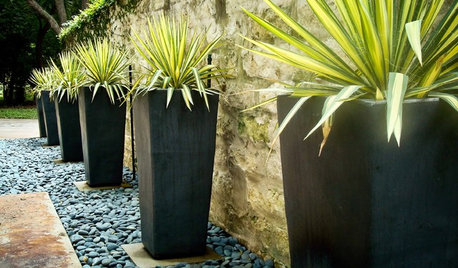One plant and 2 results
dave_worden
19 years ago
Related Stories

REMODELING GUIDESHouzz Survey Results: Remodeling Likely to Trump Selling in 2014
Most homeowners say they’re staying put for now, and investing in features to help them live better and love their homes more
Full Story
BOOKSCan Tidying Up Result in Life-Changing Magic?
Organizing phenom Marie Kondo promises big results — if you embrace enormous changes and tough choices
Full Story
COLORSpeed-Dial Color Selection to Get the Best Result
You’ve belabored your color decisions and are still stuck. Here is how to evaluate your space and make choices that are right for you
Full Story
KITCHEN DESIGNSurvey Results: Kitchen Trends That Seem Here to Stay
More than a third of respondents in Houzz’s annual kitchen trends report now have the means to remodel. Here’s what else they told us
Full Story
WORKING WITH PROSWant the Best Results? Join Your Design Team
Take a leading role in your home project to help the process go more smoothly and get what you really want
Full Story
RANCH HOMESHouzz Tour: Ranch House Changes Yield Big Results
An architect helps homeowners add features, including a new kitchen, that make their Minnesota home feel just right
Full Story
DECORATING GUIDESSmall Ideas for Big Results
8 easy changes that can makeover a room, from clearing off the mantel to choosing a new light
Full Story
HOUZZ TOURSHouzz Tour: Battling the Tides Results in a Wondrous House on the Water
A complex construction effort pays off big-time with unobstructed views of Blue Hill Bay in Maine
Full Story
BASEMENTSBasement of the Week: Smart Cost Cutting, Beautiful Results
A stylish multipurpose basement for less than half the usual cost? See the budget-saving tricks that helped this underground space
Full Story
CONTAINER GARDENSWant Compelling Garden Minimalism? Think One Plant, One Pot
Highlight a show-worthy stunner or elevate a pedestrian plant by giving it a solo starring role in the garden
Full Story






jenny_in_se_pa
dave_wordenOriginal Author
Related Professionals
Lake Oswego Landscape Architects & Landscape Designers · Alamo Landscape Contractors · Biloxi Landscape Contractors · Cary Landscape Contractors · Dallas Landscape Contractors · Fort Myers Landscape Contractors · Palatine Landscape Contractors · Whitehall Landscape Contractors · Golden Valley Landscape Contractors · Anaheim Fence Contractors · Burlington Fence Contractors · Millbrae Fence Contractors · Provo Fence Contractors · Reisterstown Fence Contractors · Hermosa Beach Fence Contractorstapla (mid-Michigan, USDA z5b-6a)
dave_wordenOriginal Author
tapla (mid-Michigan, USDA z5b-6a)
Cornus
tapla (mid-Michigan, USDA z5b-6a)
Emmay
headgardener
tapla (mid-Michigan, USDA z5b-6a)